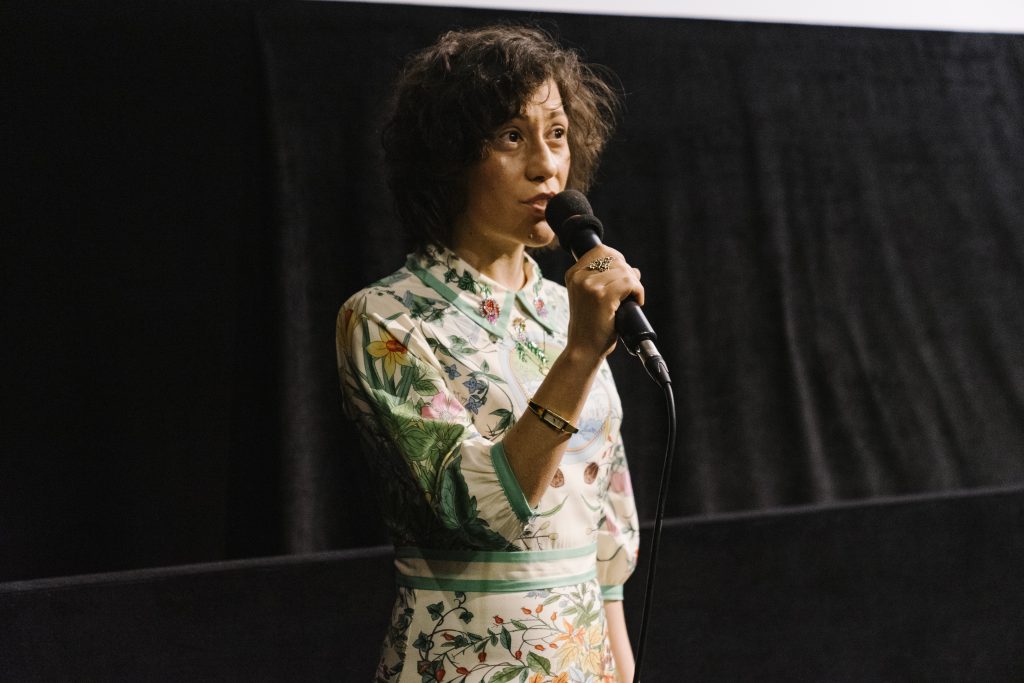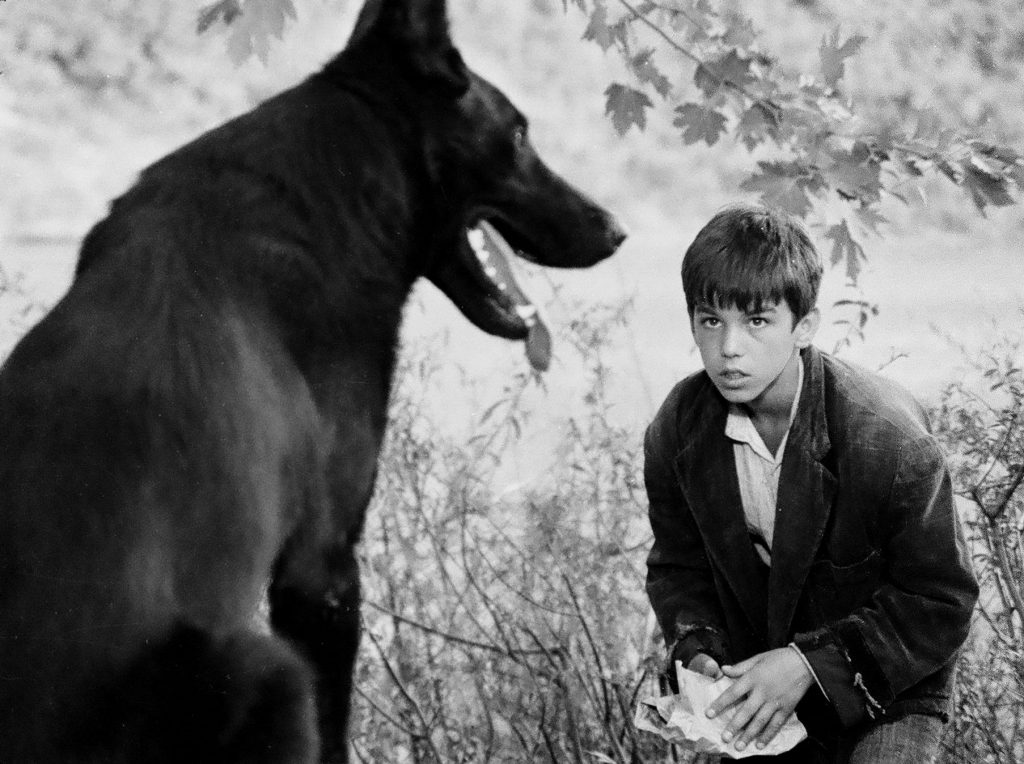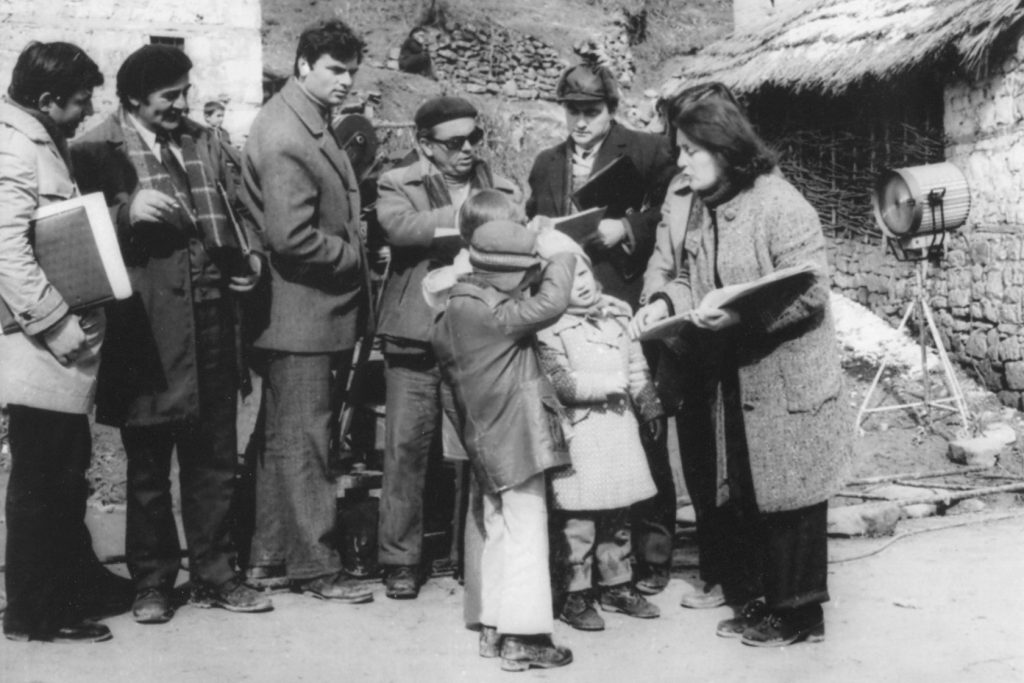Interview by Andrey Arnold
Why does Xhanfise Keko stand out in the history of Albanian cinema?
The answer is slightly complicated. Firstly, out of all the contributions of Albanian film directors to the history of cinema, Xhanfise Keko’s work seems to resonate the most with modern audiences – possibly because she chose to deal with children’s themes which are universal. Also, she managed to avoid communist propaganda and ideology much more than her male counterparts.

Where did the current touring retrospective of her work stem from?
In 2012, we collaborated with the Irish film critic Mark Cousins on an essay film titled Here Be Dragons. The Albanian-American filmmaker Thomas and I invited Mark to came to Albania as a festival jury member and to gave his input into the Albanian Cinema Project, an initiative to raise awareness, promote and restore Albanian cinema. It was through this initiative that we restored Keko’s Tomka and His Friends (1977) in collaboration with the prestigious Library of Congress. Once we shared with him her complete oeuvre as an editor, documentarian and director of children’s films, Mark rightfully fell in love with Keko’s work. He featured segments of her films in his essay Here Be Dragons (2013) and A Story of Children and Film (2013). This led to Tomka being distributed in the UK cinemas in 2013, a fantastic achievement which brought even more attention to Keko’s work. Then Ska-Ndal Productions, the Albanian distribution company of Keko’s films, managed to raise some funds and started scanning more of her work. All this attention into Xhanfise Keko’s contribution to world cinema clearly shows what difference it all makes when critics, archivists, filmmakers and scholars, work well together.
Which was the first film of hers you saw?
I can’t recall precisely, because I was still a child, but most likely it was one of her two cult classics: Spoiled Mimoza or Tomka and His Friends. It was on Sundays, our family day, when in communist Albania there would be a kid’s movie on television at 10.30 am. I must say, in a way, we were a bit smarter in our programming then.
Did you watch her films often?
Yes, I did. Both cinema and television were very present in our lives.
What are your memories of watching them at that time?
I must have enjoyed them, because I was aware of her reputation even then. Through her work and success I understood very early that a woman can make films and be good at it as well.

I read that Tomka and His Friends is considered her most famous and beloved film. Why do you think that is?
First of all, in Tomka the city of Berat, where the film is shot, is a character of its own. I lived in Tirana, the capital city of Albania. It’s a typical industrial capital, a settlement, it does not really have an specific identity of its own. On the other hand, Berat is a thousand years old with its own characteristic houses, a way of lifeand its own time, so to say. And Keko used all that very well. One of her particular talents as a director is her keen eye for casting children actors. She chose such interesting types, so that a young viewer could easily identify with one or the other characters in the films. That was her strength, giving the viewer such bounty of personalities that you could emotionally identify with. Also, Tomka and His Friends is quite safe. It’s about the second world war. You know that the kids are on the good side. And simply: it’s beautifully made. It has moments of freedom and joy, a sense of discovery that cinema should always have in my opinion. Even though the historical war setting is dark, there are glimpses of uplifting hope.
Then again, in one of your introductions at the Crossing Europe Film Festival 2019 you said that the films mocking portrayal of the nationalist movement, the Balli Kombëtar, caused the film problems after the end of the communist rule. Could you elaborate?
In the past few years, there has been a backlash against the Albanian cinema produced under communism,under the pretext similar to films made under the Nazi rule in Germany, that they should not be presented without guiding introductions. Some believe that the propaganda embedded within the films of that eracontains and ridicules historical moments and personalities. It is true that within this framework, the communists built the representation of certain characters, be them clerics or collaborators, that are at times on the border of caricature. There are opponents who say that because young people don’t understand that part of history and that someone has to babysit them and guide them through the viewing process, or the films should be banned entirely.
What is your position?
I’m definitely against banning the films. Banning anything at any time means that we are no better, no smarter, and not more open than those who came before us. It’s the same form of repression just now in the name of newer concepts. What I believe in strongly is the importance of watching, studying and protecting these films. In the archival world, we must think long-term. These decisions have to be made thinking 70 to 400 years into the future. It is not our job to judge. And we should educate the heart before we educate the mind. Of course it’s important that with every screening, we get a few minutes with the audience where we don’t brainwash them by saying how great or how bad something is, just put it in a social and historical context. But when you utilize the power of the medium, which is communication and visual storytelling, I think the audience gets it and there’s no need to babysit a film. I don’t think we need to worry about what other people will think. Audiences are smarter than we give them credit for. And afterwards, I’m always open to conversation and discussion. Usually I invite other people to make it not only about me, who is trying to protect everything.
How much Is known about Keko’s way of working? How did she elicit the amazing performances from her child actors?
In a way, we are quite fortunate in this regard. Before Xhanfise passed away in 2007, she wrote a memoir titled The Days of my Life. There, she describes her method in a very humble way. Because her films were so successful and almost every child in Albania wanted to be in them, we know much about the casting process. She and her assistants would go to thousands of schools, always on the lookout for the original, the unique, the troublemaker. But I don’t think we’ll ever know how, with such humbleness, she managed to have such an observant eye. She really paid attention to detail and hence has chronicled a way of life that doesn’t exist anymore – and I don’t mean that just with regard to the repressive communist system. For example, in Spoiled Mimoza, we spend most of the short running time in the courtyard where the children play. The film documents a wealth of children’s games that I bet we would have forgotten if Keko had not shot them so beautifully. Most of all, I think she spent a tremendous amount of time with these children and used her interactions and their responses brilliantly in her work.

What was the state of Albanian cinema at the time? Was there an aesthetic directive, and if so, how did Keko fit in or subvert it?
Martin Scorsese made a great essay film called My Voyage Through Italian Cinema. In it he sometimes talks about directors who, in his words, managed to smuggle something through the system they were working in. Thomas Logoreci and I feel that in Albanian cinema, Xhanfise Keko’s work deserves our respect exactly for thisreason. She took advantage of the special status of children’s films, where fantasy and imagination were possible. Most other Albanian films of the time were very rigid, because formalism was forbidden. So if someone put a shot into a film solely for aesthetic purposes, it was cut out. Xhanfise, being a smart one, managed to have experimental techniques in her films. She played with the fantastic and created images of idyllic beauty.
Can you give an example?
There is a beautiful dream sequence in The Newest City In The World, another film we are hoping to restore. In it the protagonist, a 7-year old boy, has a dream wherein he constructs a new city. Xhanfise takes him and puts him in a real construction site, a little kid controlling enormous steamrollers. Suddenly, out of nowhere, as he’s doing all these things through the smoke of his dreams, five trees magically appear in a nearby field, one after the other. That’s a device you usually see in experimental cinema. In the context of Albanian film production at the time, where everything had to be functional an realistic, this was unique.
In the retrospective, the film We’re Shooting a Movie sticks out. There are elements of a children’s film in it, but it also deals with the adult theme of divorce in a very serious manner.
In the mid-80s, Xhanfise Keko’s husband, Endri, who was a well established camera operator had a devastatingon-set accident. After that, Keko had to take care of him for the rest of his life. We believe this experience made a difference in her films. Her subject matter grew to be more complex, more adult-like. We’re Shooting a Film is a perfect example of that. For me, it must be respected on two levels. Firstly, divorce was not something we really dealt with in Albanian cinema. It was very rare for a couple to have a divorce, it carried a strong stigma. Therefore, it was rare that this kind of social drama was given screen time. In my opinion, it was an act of courage on Keko’s part to tackle it with such maturity. Moreover, in Albania we don’t have enough films about the process of making films. We’re Shooting a Movie is one of those adorable few examples where, through a child’s eye, the audience discovers how the illusion of cinema functions.
Is We’re Shooting a Movie an anomaly in her filmography?
The saddest part is that even though Keko was beloved by everybody and had every opportunity to make more films, she never did so after the fall of communism. I don’t know why, but there was a moment in her life when she asked the opinion of her husband, a film professional as well, if she should make films for adults. He sadly and wrongly advised her to stick to kid’s movies. I’ve often wondered what those films would have looked like…
How is Keko remembered in Albania today?
Her name resonates with us still. There is a very long avenue in our capital Tirana dedicated to her, Xhanfise Keko Street. People still love her. They feel her absence in our film tradition and as an upstanding individualwho never stopped working hard. She was an example of an individual who can be a great professional and a great human being at the same time, something that can’t be said for all directors.